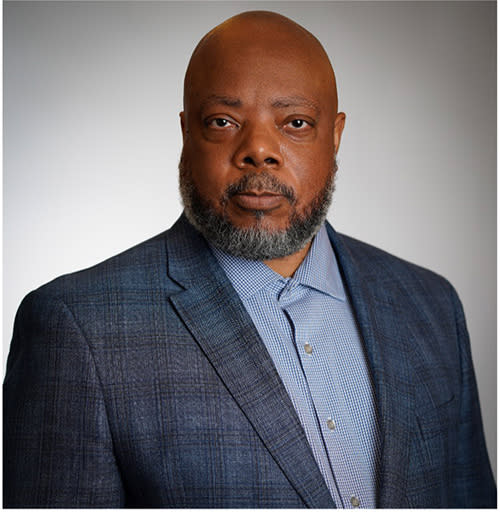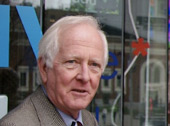GenAI Penetrates Broadcast News Rooms at a Surprising Pace
How does the industry harness the benefits?

It looks like TV and online news operations nationwide are already moving at breakneck speed to capitalize on a broadening range of benefits delivered by generative artificial intelligence.
This was the obvious takeaway from accounts of GenAI activity offered by executives representing a sizeable slice of the U.S. broadcast news business at NAB Show New York this week. It’s only been a year since OpenAI’s ChatGPT made GenAI available for commercial use, but adoption in broadcast news has flourished with an allure in the creative sphere that goes far beyond the longstanding uses of AI in automatic speech recognition (ASR), performance monitoring, content-aware encoding, and other applications benefitting the M&E industry.
Now the question is, how does the industry harness the benefits without succumbing to the potential the technology has to undermine copyright enforcement, veracity, balance, and nuance in news coverage?
James Finch, vice president of news services at Gray Television, voiced the emerging consensus view on controlling GenAI at TV Newscheck's "TV25: Monetizing the Future" conference at NAB Show New York this week, when he commented, “We’re going to prioritize our audiences and journalists over any benefits from AI.”

Formulating policies along these lines at the corporate level has become a game of catchup as local news operations jump on the GenAI bandwagon. In many cases, GenAI has become embedded in TV station news workflows ahead of front-office awareness, let alone any coordinated attempt to rein it in.
Michael Newman, director of transformation at the digital media and technology firm Graham Media Group, described what happened earlier this year when his office sent out a company-wide questionnaire asking, “Do you use AI?” “We got a spectacular response,” Newman said. “An unbelievable number of people are using AI day to day, even for headline writing and [news story] drafts.”

This signaled that Graham Media, which supports news operations at seven mostly big-city TV stations in Florida, Texas, Michigan, and Virginia, needed “to get out ahead of it,” he said, but in a way that would “bottle the enthusiasm.” That attitude appears to be guiding the emergence of ground rules for use of GenAI across the industry.
The professional video industry's #1 source for news, trends and product and tech information. Sign up below.
The goal should be “to help journalists do their jobs,” said Colin Benedict, vice president of news at Morgan Murphy Media, another supplier of news production support that works with seven stations affiliated with CBS, ABC, NBC, Telemundo, and Univision in Wisconsin, Washington, Texas, Florida, and Iowa. Currently, Morgan Murphy finds station news teams are spending just 25 to 40 percent of their time “creating original material,” Benedict said. “We want to get that up to around 80 percent.”

For example, he noted, Morgan Murphy affiliates’ news staffs are using large language models (LLMs), the pre-trained artificial neural networks that are designed to create human-like responses from massive datasets, to produce the first drafts of web articles from live broadcast feeds, which are reviewed by staff members before they’re posted. This cuts average time spent on executing the task from 30 to just four minutes, he said, which frees staffers to spend more time on creative work.
Along with using GenAI to turn original content into alternative versions, Morgan Murphy is fostering back-office uses. But it draws a line at using the technology to create original content, Benedict said.
While that appears to be the case in most news operations, there’s no getting around the fact that, in the fast-paced, increasingly competitive world of broadcast journalism, there’s a mounting temptation to blur that line. Fears about the potential ramifications are well founded, according to Graham Media’s Michael Newman.
The focus on the efficiencies enabled by GenAI generates fear of job loss in the newsroom, he noted. With more content streaming around the world than ever before, there are worries about a growing pool of unreliable information that AI can draw from. And, he added, “We need humans to tell critical pieces of the story that AI misses.”

Ahron Young, founder and CEO of the online newscaster Ticker, conveyed what it’s like walking the AI edge in a day-to-day scrum that’s generating 13-minute news capsules 24/7 for access through the Ticker App or on affiliated sites like Samsung TV Plus, Fetch TV, Sling, Telstra TV, and FuboTV. Citing the need to reduce the mundanities that burden journalists, Young said, “No one wants to do a mindless job.”
The real question, he added, “is how much better can the story be with this technology?” Noting “humans make a lot of mistakes,” often with decisions “based on emotion,” he pointed to beneficial uses Ticker is getting out of GenAI with research assistance, search-engine optimization (SEO) summaries of its video feeds, help with writing headlines, and promoting ad sales with messaging targeted to specific advertisers’ interests.

Another note of caution against too much GenAI restraint was sounded by Philippe Petitpont, CEO and co-founder of Newsbridge, a vendor specializing in GenAI-driven live and archive media asset management for news organizations. Considering whether broadcasters need a chief AI officer to keep things in check, Petitpont said a guiding principle should be “don’t be too strict.”
But Finch made clear there needs to be a corporately sanctioned guide to AI policy, which his company has created in the form of a task force that meets quarterly to review new developments and feedback from its 113 stations. Concerns over copyright infringement, erosions in staff trust stemming from job insecurity, how audiences are reacting to AI-influenced innovation, performance of GenAI algorithms, and much else are addressed by the task force in what Finch called a “living use-case document.”
Fred Dawson, principal of the consulting firm Dawson Communications, has headed ventures tracking the technologies and trends shaping the evolution of electronic media and communications for over three decades. Prior to moving to full-time pursuit of his consulting business, Dawson served as CEO and editor of ScreenPlays Magazine, the trade publication he founded and ran from 2005 until it ceased publishing in 2021. At various points in his career he also served as vice president of editorial at Virgo Publishing, editorial director at Cahners, editor of Cablevision Magazine, and publisher of premium executive newsletters, including the Cable-Telco Report, the DBS Report, and Broadband Commerce & Technology.

